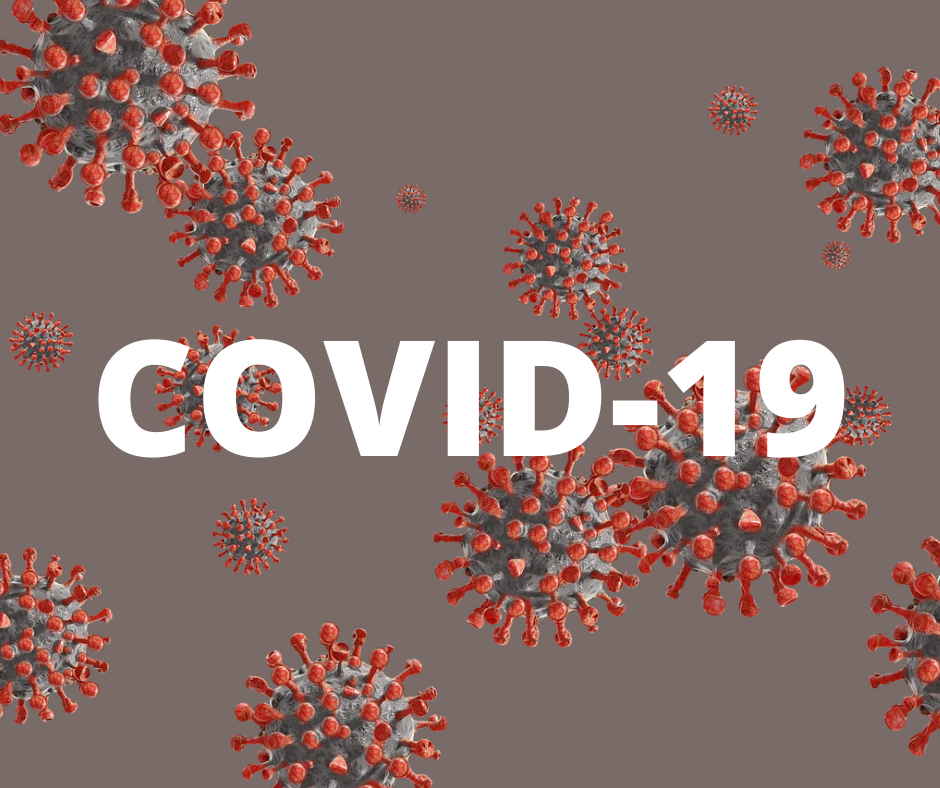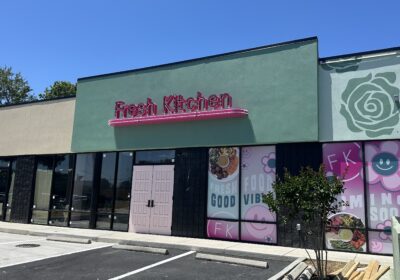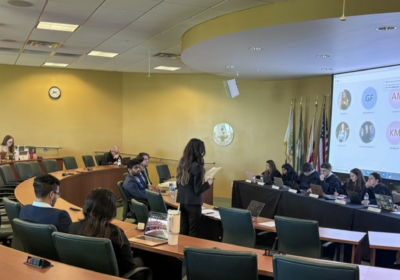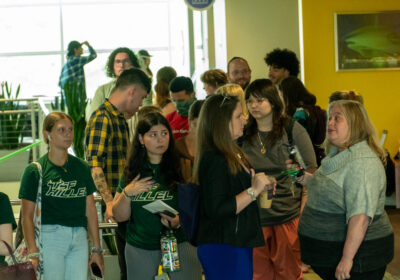Vaccine opens door to COVID-19 relief, but no end to immediate surge in cases, USF professors say

While hopes for a COVID-19 vaccine could soon become a reality, some USF professors believe it will take more than a vaccine to stop the spread of the coronavirus.
As a result of a surge in the number of COVID-19 cases, the U.S. is walking down the path toward a second wave of the novel coronavirus. Despite advancements in possible vaccines, College of Public Health professor and epidemiologist Edwin Michael said it won’t be enough to contain the surge in cases.
“The vaccines are going to be far too late to stop the second wave,” Michael said. “The vaccine can reduce the peak numbers and may hasten the end of the second wave, but it’s not going to prevent the second wave. We are still in a very dangerous kind of period.”
Millions of Americans have been impacted by COVID-19 since the first case in the U.S. was reported in February. Since then, more than 12 million cases have been reported and 250,000 people have died.
The Massachusetts-based drug company Moderna announced Nov. 16 that its vaccine has a 94.5% effectiveness rate while drugmaker Pfizer announced Nov. 18 that its vaccine had a 95% effectiveness rate and no “serious” side effects.
Pfizer announced the submission of the application to the U.S. Food and Drug Administration on Nov. 20 to authorize the emergency use of its vaccine. Upon the approval of the application, high-risk populations could potentially get the vaccine by the middle to end of December, according to a press release.
If the current circumstances remain, public health professor and Senior Associate Dean of the Morsani College of Medicine Jay Wolfson projects that the Tampa Bay area — Hillsborough, Pasco, Pinellas and Hernando counties — will report more than 15,000 cases per day. In Hillsborough County alone, the number can go up to 5,000 daily cases.
The issue, however, will not be regarding death rates, but on the number of hospitalizations.
“The good news is that the death rate has been stabilized because we know how to care for patients a lot better than we did, but more people you have will get sick,” Wolfson said. “The more people are going to be very sick, the more people are going to go to the hospital. The strain on the health care system is going to be significant.”
With or without a vaccine, Michael said the second wave is set to end between April and May. Until then, he said the practice of social distancing and the use of face coverings is crucial to control the spread and avoid overwhelming health care facilities.
“If you relax your social measurements, the numbers will explode and the hospital system will just collapse. So that is decoupled from the vaccination rollout,” Michael said.
“You still have to maintain your social distancing and give time for the vaccines to roll out safe. We are aiming for [gaining] time so that the hospitals are not overwhelmed and then people can get vaccinated.”
For College of Public Health Dean Donna Petersen, a vaccine would be a “game changer” across the country as efforts to mitigate the risks of contracting and spreading the virus persist.
“Everyone has been awaiting these vaccines,” she said. “But remember, we need to vaccinate everyone in the entire world, you know, it’s going to take a while. There’s no way they can produce enough to have it available for everybody on the first day.
“It’s going to be an interesting experience to see how many people actually step up to get the vaccine and want the vaccine. But if we get enough people to get the vaccine, that’s a game changer for them.”
Wolfson remains positive about the potential of a vaccine. The biggest challenge, however, will be distributing the vaccine as well as convincing certain groups to take it who distrust its efficacy.
“I think it’s going to play a significant role, especially with first responders and high–risk elderly [people],” he said. “Maybe by early spring there will have been a sufficient number of doses available for our first responders. We then have to overcome the distribution and manufacturing part of it, and then the big part of it is actually the reluctance of people to take it.
“The vaccine is a bright spot at the end of the tunnel, but it’s a long tunnel. And we have to get there and the only way we can get there is through personal responsibility and personal behavior which is the one thing that’s lacking now, and causing the spread.”
Wolfson said the reluctance to take the vaccine can either be caused by distrust in the government or the potential risks associated with taking a new vaccine.
“It’s not just waiting a month or two to see if there are any immediate effects but, for some of these drugs, it can take months or years before the adverse effect comes up. We don’t know.”
For Wolfson, COVID-19 is a different type of war that the country is currently facing and its biggest advantage lies in people’s complacency to fighting it.
“[The virus] just feeds on [complacency]. Because you let your guard down. And then you know people say, ‘Well you know maybe it won’t be that bad. It will be like having a cold and I’ll just get it and I’ll be over with it.’ Without realizing that they may not be over with it they can still give it to other people.
“There’s so much we don’t know about this disease still. And … the challenge I think we have is no one is taking personal responsibility, which we, as Americans, don’t do very well. Period. And then recognizing that we’re all on the same team here and that we’re at war with COVID. That’s the enemy. And it’s out to kill us. And it is waiting for us to let our guard down.”
Back in April, when the state recorded 9,000 cases of COVID-19, Gov. Ron DeSantis issued a statewide lockdown that lasted about 30 days.
As soon as the “Safer At Home” order expired April 30, businesses across the state, including bars, restaurants and nightclubs started reopening at a limited capacity of 50%. Ever since then, the cases continued to rise.
Now, Florida is near the 1 million mark in COVID-19 cases, ranking as the third state with the highest number of cases in the country. As of Nov. 22, the state has reported over 938,414 cases since March, according to the Florida Department of Health. Alone, Florida has more cases than countries like Germany and Iran, who each have upward of 80 million citizens compared to Florida’s 21.5 million.
Wolfson said another lockdown could be detrimental to the economy — especially to businesses that would not be able to recover from the losses.
“If we do it again for any period of time, some businesses just aren’t going to recover, they’re going to close,” Wolfson said. “And many people are going to lose their jobs. We already have an extraordinary amount of personal bankruptcies and business bankruptcies. We want to do everything we can to avoid it.”
The solution, according to Wolfson, comes down to social responsibility.
“The challenge with that is that only we as individuals can do this, the governor can’t make us wear a mask, and if he issues a statewide mask mandate, nobody’s going to follow it and nobody can enforce it.”
While the cases have been slightly increasing over the past weeks, USF’s measures to mitigate the risks of contracting or spreading COVID-19 have shown its effectiveness — for the most part.
As of Nov. 23, USF has reported 694 cases since the first day of fall classes in August. Of the total number of cases, 627 are students and 67 are faculty or staff.
For Petersen, the stability of numbers is due to the students’ response to the university policies and protocols around COVID-19, including the use of face coverings and social distancing guidelines.
“Our students have done such a great job,” she said. “We tried to make sure that we put in place things that made it easy for people to follow the mitigation measures and [students have] followed them, they’ve done what we’ve asked. We have not seen the kind of clusters and surges of cases and … we really credit our students.”
Despite the relatively lower number of COVID-19 cases at USF, Wolfson said the biggest challenge is to control the interactions and social behaviors that take place off campus.
“A spread on campus has been pretty well contained, but it’s what happens off campus,” he said. “Students go to the bars and they go to the restaurants, they have parties, they enjoy themselves. And that’s where [more of a] spread has occurred.”
“We already have the contingency plans in place. So, if things get bad when spring semester comes, we are already positioned to pivot toward virtual teaching and hybrid teaching arrangements if we have to.”
There’s not an estimated date for the university to move into Phase III of its reopening plan, according to Peterson. As the cases continue to rise statewide, she said Phase II will be around for a while.
“When the case number started going up around us, that was concerning and so we went to a modified Phase II, which is more restrictive,” she said. “We’ve never left that phase because the numbers haven’t allowed us to, so I think the situation got a little worse than we were hoping.
“There’s no eagerness to move ahead when the data doesn’t support it. We’ve been data-driven from the beginning and we haven’t wavered.”
To move into a new phase, Petersen said the cases should show a continuous decline over a two-week period. Despite the rising cases around the state and country, Petersen said USF’s efforts to monitor the virus have been effective.
“I think the campuses have done really, really well so we have been for the most part low,” Petersen said. “In our case, numbers have been less than we’re seeing in the communities around us, which is where we wanted to be.”
The university operations would only return to normal once it reaches Phase IV and herd immunity is achieved. However, that potentially could take at least a year or more.
Wolfson said that a vaccination distribution might be in place by the end of 2021. Until then, social distancing and the use of face masks remain the most effective preventive measure to reduce the risks of contracting or spreading COVID-19, he said.
“Wear it out of respect … and responsibility,” he said. “Neither by force nor by fear, but out of respect and responsibility. It’s different.”






